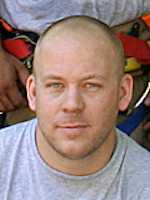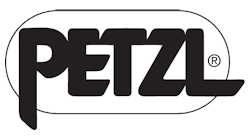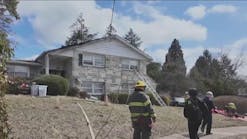Fear of Change Hampers Our Ability To Progress in Technical Rescue
Hello all, it’s been some time since I last penned an article. Well, in today’s day and age I guess I should say “typed an article.” After a new addition to the family and taking a step back from things for a while, it feels great to be back here with the Firehouse.com community.
Some time ago I thought of a topic that I wanted to throw out there because I have a hunch a good majority of you have dealt with it. If, while you’re reading this, you realize the topic pertains to you please share your thoughts in the comment box below. There’s no right or wrong being pointed out in this article. It’s more about gaining an understanding for a different train of thought.
So I will say thank you in advance for any insight you may have. Something I’ve seen time and time again is fear of change or something new. I think firefighters get in a zone of comfort and don’t want to lose that feeling of proficiency. In actuality, you’re creating a roadblock for progression in that discipline.
Having taught for some time, you realize fear of change is linked to the fear or feeling of not being able to perform that skill or method. You get so accustomed to performing the same skill set almost on auto pilot that the thought of losing that feeling is unwanted.
In our line of work, there are dozens of methods to perform the same task or skill. I think that’s one of the best attributes of our profession, especially for the thinkers among us. The sad thing though is sometimes those “thinkers” are shunned because they travel outside that box; you know the one they teach you to think outside of. As rescuers, we are trained in several disciplines, all which require quite a bit of training. With that training comes knowledge and with knowledge comes ingenuity. If people didn’t think outside the box and experiment with new ideas and techniques, the few methods we have would be challenged in an operation at some point with the possibility of failing.
Lifting and Moving Operations
Let’s look at a lifting and moving operation. There are a lot of variables that come into play when lifting an object, whether that object is a car, box truck, tractor trailer or heavy structural material from a collapse. Clearly, there are more objects that we’ll encounter, but I’m sure you get the idea.
Some of the factors on your lift or move could be positioning, the calculated weight of the load and how the lift or movement of the load will affect surrounding objects directly in contact with or adjacent to your object. Based on the location of the operation, normal learned techniques may not work. It’s now time to think outside the box and come up with new ways to accomplish your mission.
Of course, when devising new techniques the foundation knowledge you’ve learned must be adhered to. Knowledge such as material weights, correct equipment and physics a very important in figuring if the tools or shoring materials that are being used are strong enough to move and/or safely support the weight. I’m a believer that when you attend discipline classes such as rope, structural shoring, con?ned space and trench, you’re given a strong foundation to effectively and safely accomplish your mission.
Now I’d like to rewind several words and together we’ll shout “foundation!” That felt great, right? Just because it’s in black and white in a text book doesn’t mean it is the be all, end all of how to do things. Think about it. If someone hadn’t developed that technique, it would never have made it into the black-and-white print that some people latch onto and never deviate from. As long as you abide by the scienti?cally tested rules that engineers have documented for the materials and equipment we use, then the sky’s the limit. The only other rule you can never ignore is safety ?rst. Bottom line, safety can never be compromised. That is why, when experimenting with new techniques, this should be done in a controlled atmosphere.
In my experience, out of all of the rescue disciplines we perform, rope rescue seems to have the widest spectrum for experimentation and developing new techniques. It’s also one of the areas I ?nd I get the most resistance in, whether it is during training or in the ?eld. Because of that, I wanted to share some pictures of techniques that have caused me static. Clearly these are not major things; however, the resistance can sometimes be amazing.
Using New Tools
In the fire photo (see Photo 1), you will see the very popular belay device called the 540 Rescue Belay. The 540 is an outstanding device and very user friendly, in my opinion. The only down side to it is should there be a belay catch and the need arise, you cannot lower the rescuer or victim. I’ve come across people who are misinformed, thinking that the lever on the back side of the device can be used for lowering. It is only used to offload the belay should there be a belay catch. If, for example, the belay line was lagging behind the lowering line during decent, thus causing the 540 to lock up. How did I honestly learn this? Through mistakes I made myself when I was ?rst introduced to the 540.
In my opinion, Photo 2 represents a good example of the advancement in equipment technology. This is the CMC MPD (Multi Purpose Device). Like the 540, it is a belay device; however, it can also act as a lowering device and is quickly converted into a raising system. Photo 3 is a 5:1 MAS (mechanical advantage system). You can also initially create a 3:1 MAS. Pretty cool, right?
With the clear advantages of using the MPD, I still encountered a lot of resistance, mainly because it was new to people. After playing with it for a while, most saw the light, but some resisted it and didn’t want the change. The second example I have is something as simple as setting a directional pulley. Something I’ve seen a lot when setting a directional is one guy moving and holding the pulley in place while someone else is at the anchor ready to tie off when they get the nod.
Photos 4 and 5 show two ways that a single rescuer can set the directional from the anchor point. In Photo 4, you initially tie off at your anchor point then run the rope through the carabiner (a pulley can be attached to that carabiner creating a more desirable bend in the rope) on the directional pulley and walk back towards your anchor with the rope. While walking back to the anchor, you are not pulling the rope; you’re letting it run freely through your hands. Once back at the anchor, you will do two simple things: first, communicate with the rescuer stationed at the targeted decent area; then pull on the running end of the rope (in Photo 4 it would be on the left) moving the pulley towards you until the rescuer says, “Stop.” At that point, just tie your knot and connect to your anchor. In Photo 5 you’ll see the same operation using a MAS. You hook one end to the directional and the other to your anchor. Communicate and haul until directional is set in place.
The third and last idea that I want to show you is two rigging plates, side by side in Photo 6. The one on the right is a normal rigging plate made by Petzl. It has large, ample rigging points and it’s been around for some time. The one on the left is a UFO, which stands for Universal Focusing Object. It’s made by Rock Exotica. It’s also a rigging plate, or, actually, a rigging cube. The UFO provides you with a 360-degree window to rig in, whereas you’re limited with a standard rigging plate. Everyone who sees this for the ?rst time says the same thing, “What the h!@$ is that?” It’s so new and different that people think its cool, but because it’s really uncharted water, they shy away from using it.
Those were just a few examples from one discipline that I have encountered. Like I said in the beginning of this article, to each his own and everyone’s entitled to their own opinions and ways of doing things. However, for those who shy away from swimming in those uncharted waters, keep in mind that the gear you’re comfortable with and so accustomed to using was created by someone doing a cannonball into those very same uncharted waters.
Please share your thoughts below, not only for me but for everyone else who was thankfully entertained enough to make it to this point in the article. I leave you this month with these words... Don’t fear progression…create it!
Stay safe, stay progressive.
MICHAEL R. DONAHUE is assigned to Rescue Company 1 in Elizabeth, NJ and is the owner and founder of Progressive Rescue.He holds the title of rescue specialist with New Jersey's Urban Search and Rescue Team (NJ-TF1) and he is actively teaching at Middlesex Fire academy and the Middlesex County College as their Fire Science Program Coordinator. He has taught as a HOT instructor at Firehouse Expo and is the Specialized Rescue Forum moderator for Firehouse.com. You can reach Michael by e-mail at [email protected].

Michael Donahue
Owner and founder of Progressive Rescue, Mike Donahue is a 13-year veteran to the fire service. In those thirteen years Mike has experience as both a volunteer and federal firefighter and has been a career firefighter in the City of Elizabeth for the last 10 years, the last seven of which and currently working out of Rescue Company 1. Mike holds the title of Rescue Specialist with New Jersey's urban search and rescue team (NJ-TF1). You can find Mike actively teaching at Middlesex and Somerset Fire Academies as well as Middlesex County College as an Adjunct Professor and the Fire Science Program coordinator. He is actively involved in writing new course programs for the various organizations he teaches for. Mike has reviewed several text books for publishers such as Delmar and Jones & Bartlett. Mike has also co-written the new rope program for Jones & Bartlett and taught Rope Rescue Made Simple at Firehouse Expo 2010. Mike also is a monthly columnist for Firehouse.com covering the area of technical rescue. His teaching techniques and cutting edge style have gained the respect from many of his peers. Mike's passion, experience and desire to educate emergency service providers prove to be the driving force that has made him so successful. Progressive Rescue prides itself on providing the most cutting edge, diverse instructional programs available. We strive to provide your department with the most comprehensive, dynamic learning experience available at a truly competitive price. You can reach Mike by e-mail at [email protected]







